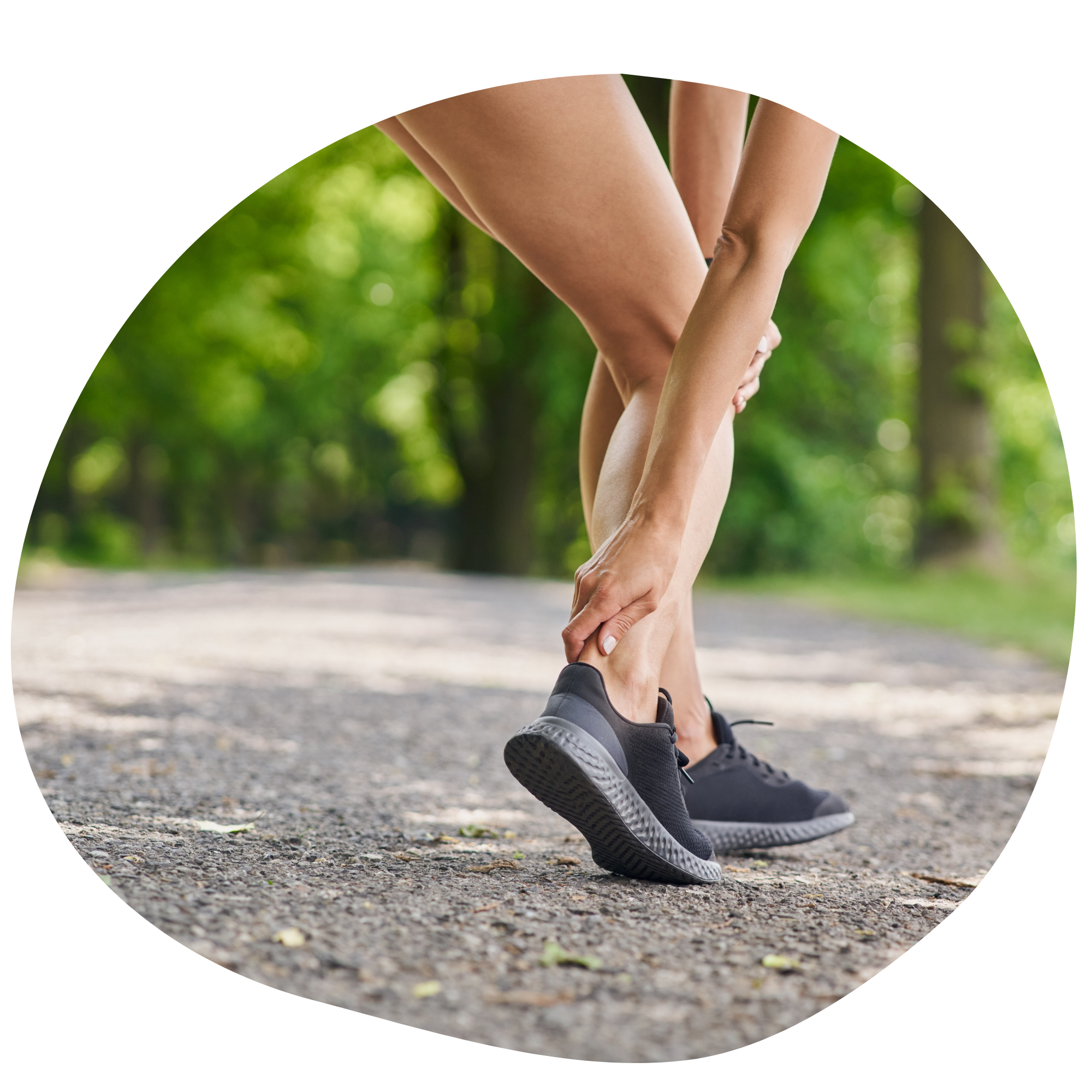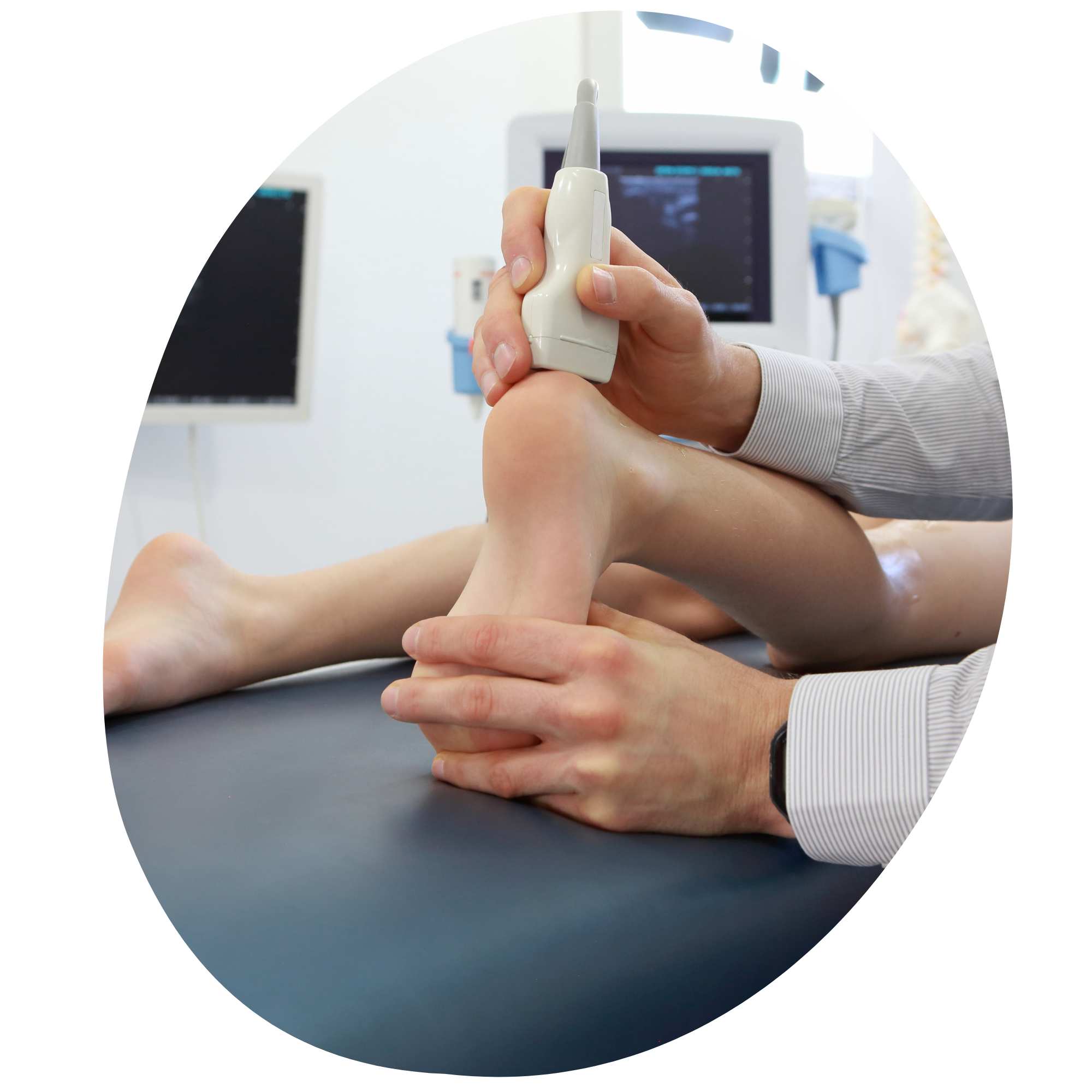Achilles Tendinitis / Tendinopathy - Back of heel pain
Achilles tendinitis / tendinopathy is a common foot condition that affects the Achilles tendon, which is a thick band of tissue that connects the calf muscle to the heel bone. This condition is painful and can affect anyone, but more common in athletes and people who participate in sports which involve running or jumping.
Below is some information about this condition and how our podiatrist at Glide Podiatry can help you.
Before we begin
Tendinopathy is often used to refer an overuse injury (repetitive stress) that is associated with degenerative changes in the Achilles tendon.
Tendinitis can occur in people who suddenly increase their activity loads, and people who engage in repetitive activities over a longer period of time.
Research has shown that tendinopathy is more commonly associated with degenerative changes, rather than inflammation, so the term tendinopathy is now preferred over tendinitis
Achilles tendinopathy can occur at the insertion point of the Achilles tendon to the heel bone, or in the mid-portion of the band of the Achilles tendon.
The treatment plan for the two conditions are different. Therefore, it is important to get thorough evaluation from a healthcare professional to determine the diagnosis, and best treatment plan moving forward.
Symptoms of Achilles tendinopathy
The most common symptom of Achilles tendinopathy is:
Pain and stiffness in the back of the ankle
Swelling and tenderness
Difficulty walking or running
Gradual onset of symptoms in midportion tedinopathy
pain near the heel bone in insertional tendinopathy
A physical examination by our podiatrist can help formulate an effective treatment plan.
Why did I get it?
Achilles tendinopathy can affect all age groups, some examples of common causes and risk factors include:
Overuse, or repetitive strain on the Achilles tendon
Sudden increase in activity or intensity
Poor footwear or training techniques
Previous trauma
Tight calf muscles or other muscle imbalances
Age-related degeneration
Family history or genetic predisposition
How is it diagnosed?
Physical examination by our Podiatrist
Furter tests can be referred on by your podiatrist such X-rays and ultrasounds
Can be used to rule out other conditions and assess the extent of the damage
What treatments are there?
Most people will follow the usual procedure of taking nonsteroidal anti-inflammatory medications (NSAIDs),resting, icing, and massaging the area prior to seeking medical help.
Some of the treatments available in podiatry include.
Footwear advice and modification (in-shoe padding)
Taping
Strengthening and condition program (such as tendon loading), along with modifying activities.
Custom orthotics
Dry needling
Manual therapy (massage)
Foot and ankle mobilisation
Other conservative treatments which will be available in the future at Glide Podiatry
Extracorporeal Shockwave therapy (ESWT) to use shockwaves to stimulate healing
If conservative care fails, we can consider more invasive measures such as
Ultrasound guided cortisone injection - this may not always be recommended
Surgical repair or removal of damaged tissue
Concluding statement
Achilles tendinopathy is a painful condition that can affect anyone, by having a podiatrist assess you thoroughly, we can create an effective treatment plan to guide you every step of the way to quickly get you back into what you love doing most.
Visit our Hendra clinic today if you are experiencing pain in the Achilles Tendon
Make an appointment with Philip below.
Servicing the residents of Brisbane
Hendra, Ascot, Hamilton, Clayfield, Albion, Nundah, Clayfield, Eagle Farm, Northgate, Wavell Heights, Kedron, Gordon Park, Lutwyche, Windsor, Newstead, Stafford, Grange, Kelvin Grove
Key words: Achilles tendon pain, pain at the back of the heel, calf pain



